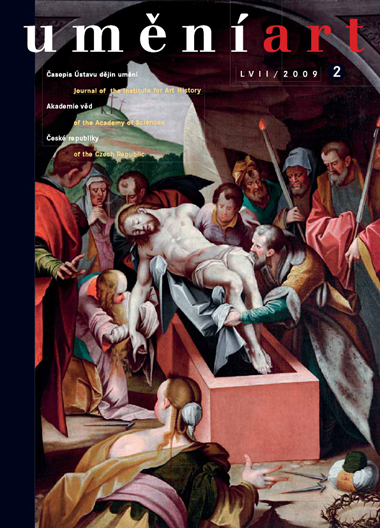Jan Chlíbec
Italská inspirace terakotových reliéfů Pernštejnského paláce na Pražském hradě
There are several problems connected with studying works by Italian Renaissance sculptors and stonemasons who worked in the Czech lands, in particular, the small number of works that have survived. From the existing works it is evident that architectonic sculpture and plastics predominated. The modest number of three-dimensional sculptures indicts that at this time in the Czech lands 'Italian' sculpture was secondary to architecture. For the most part, Italian sculptors and stonemasons came to the Czech lands from the artistically undeveloped Italian-Swiss border. 'Italian' sculpture did not progress in the Czech lands and it did not draw inspiration from contemporary impulses in Italy - except in the case of the sculptural work in Prague's royal court. Another limitation on the inventiveness of Italian sculptors working in the Czech lands was the fact that at the wishes of their clients they often modelled their work on prints created by authors from the Transalpine lands. One example of a comprehensive sculptural project created by an Italian in the Czech lands was the terracotta decoration of Pernštejn (later Lobkovic) Palace at Prague Castle in 1554-1560. While the inspiration for these reliefs comes from the sculpture of Lombardy, its original roots lay in Tuscany. Lombardy's absorption of impulses from Tuscany was significantly influenced by the sculptural decoration of the Portinari chapel in the Basilica of Sant'Eustorgio in Milan, with which the artists working in Prague were familiar, just as they also knew of the tomb of the condottiere Colleoni by Giovanni Antonio Amadeo in the Cappella Colleoni in Bergamo. The authors of the terracotta work in Prague may have originated in Pavia, an important centre of terracotta architectural arts. There are also historical references to Pavia, in particular the delegation of Czech nobles to Genoa in 1551. Vratislav of Pernštejn (brother of Jaroslav, who built the palace) led the delegation on the Czech side, stopping for a time also in Pavia, where he had an opportunity to engage local specialists.
Full-text in the Digital Library of the Czech Academy of Sciences:
https://kramerius.lib.cas.cz/uuid/uuid:e44647c8-beb6-781d-fa6a-4dd09c3b25aa
< back

